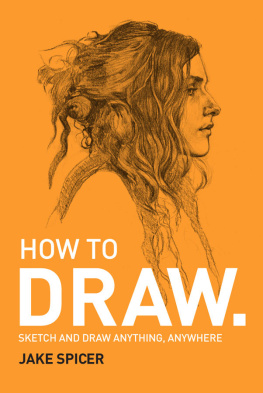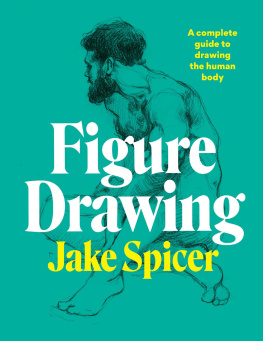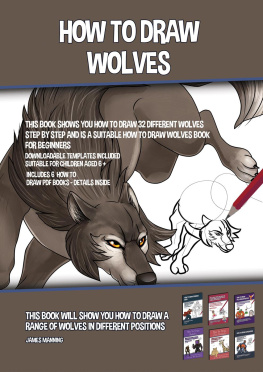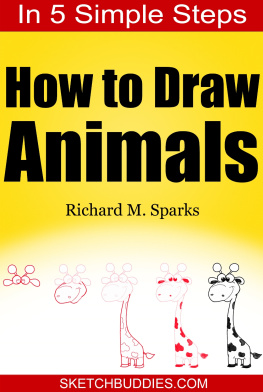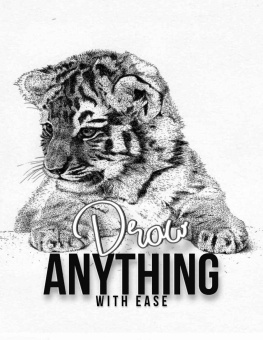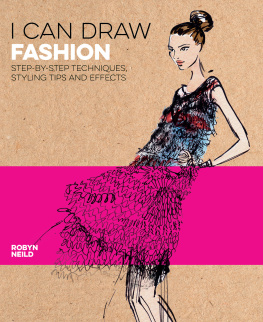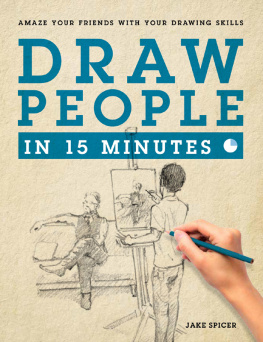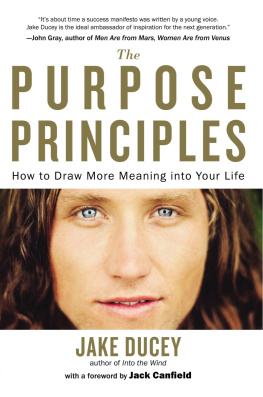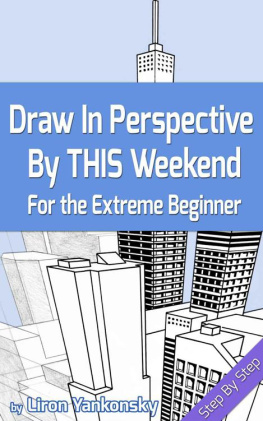
Jake Spicer is an artist and drawing tutor based in Brighton, England. He is head tutor at the independent drawing school, Draw, a co-director of the Drawing Circus and he regularly runs portrait and figure drawing courses for the Camden Arts Centre and National Portrait Gallery.


CONTENTS

How to use this Ebook
Select one of the chapters from the and you will be taken straight to that chapter.
Look out for linked text (which is in blue) throughout the ebook that you can select to help you navigate between related sections.
You can double tap images and tables to increase their size. To return to the original view, just tap the cross in the top left-hand corner of the screen.
1 JUST DRAW
EVERYBODY CAN LEARN TO DRAW.
And anyone who can draw can always improve. The world we live in is a highly visual one, and we are increasingly communicating through pictures. But, in contrast to those instantaneous visual blasts, the process of drawing encourages us to take the time to really look at another person, objects and our surroundings. The response we create with marks on a tactile surface demonstrates the effort to see and understand those things better.
Many of us fall out of drawing at a young age, some of us keep drawing sporadically and a few of us make it part of our day-to-day routine. Although most children enjoy drawing and painting, as we grow up we often become self-conscious about it and frustrated when our pictures dont come out as we intended. Although some people have a natural aptitude for drawing, the ability to draw isnt a talent that you are born with; its a skill, like learning to play an instrument, or another language, that requires patience and practice.
Whatever your level of experience, the only way to get better at drawing is to draw more. This book is intended to give you confidence in your own drawing and to make it easy to fit drawing into your life.

WHY DRAW?

PICTURE MAKING
A drawing can be a picture; a representation of a thing we have seen or imagined. Drawing as a process is an immediate way of structuring an observation or bringing an idea into being. Painters, printmakers and anybody making pictures and objects in any medium will benefit from developing fundamental drawing skills. Drawing as a sensibility can extend beyond the conventional mediums we associate with it; sketches can be made in paint, film, built in three-dimensions and so on. For the purpose of this book Ill be writing about drawing in its most conventional form.
VISUAL COMMUNICATION
Modern image-making techniques tend to be largely mechanical or digital, and so drawing is now commonly seen as an artistic practice. Drawing can be art, for sure, but it neednt be restricted to artistic uses. Think of drawing as a language. Language can be used in different ways: to write poetry, academic papers, washing machine instructions and road signs. Drawing is a similarly versatile visual language with its own vocabulary of marks that can be used for many applications. Whether you are drawing a map to give somebody directions, sketching a diagram to explain how to place furniture in a room or storyboarding an animation in visual snapshots, some ideas are just more efficiently represented by drawing.
DRAWING AS A THINKING TOOL
Almost every man-made thing that we see around us started as a drawing: from buildings to furniture, to posters, to stationary. As an aid to thinking, sketching something visual on paper allows us to explore ideas in a holistic way rather than pinning them down to fixed linguistic concepts, and drawings made in versatile mediums like pencil can easily be adapted as the idea evolves. Just like any language, drawing can be used playfully, providing an outlet for creative thought and emotional expression, channelled through the tactile process of mark-making.
LEARNING TO SEE
Observational drawing is a means of exercising our visual faculty, and it allows us to practise looking. It can also be a powerful tool for focussing our attention: it teaches us to select a subjects most important qualities and make visual discoveries, encouraging curiosity and improved understanding.
We are constantly bombarded with visual imagery; becoming more visually literate allows us to be discerning about how we look and how we are affected by the images we come into contact with. As we get older, we also look less closely at familiar things; drawing can open our eyes to a fresh and childlike wonder in the mundane.

HOW DO I DRAW MORE OFTEN?
To draw better, youll need to find the time to draw more often. Drawing requires some attention and focus, and this book is intended to help you. Treat it like a kind but firm friend, politely reminding you that to get better youll need to put some work in and this is how to do it. Firstly, you want to remove the barriers that stop you from drawing, making it easy to find time and motivation to draw.

TIME
Dont have time to draw? Make the time. Start with a few manageable goals and use the exercises in this book to structure them. Attempt 34 exercises a week, or find a way to work drawing into another regular activity; sketch fellow passengers on the morning commute, for example, or draw in the kitchen while waiting for the kettle to boil. Use the time in between other activities to provide a foundation of regular practice, then put aside an hour or two on top of that to sit down and draw in earnest at home or at an art class. The example drawing regimes youll find at the end of this book will help you to structure your time.
CONFIDENCE
Worried youre not very good at drawing? Thats why youre learning! Remember that everybody needs to start somewhere. Your first drawings might be clumsy and misproportioned, but they are part of an ongoing process and youll only improve by engaging with that process. If youre self-conscious about being seen drawing, start off drawing in private and slowly build up to more public locations, or go out drawing with a friend. When youre learning, you need to make many, many bad drawings before you make any good ones, so be gentle with yourself and stick with it!
SUBJECT
Nothing to draw? There are things to draw everywhere; the trick is finding subjects that interest you. Learn to see beauty in the mundane and use the practical advice in to help you. Work out where your interests lie; do you enjoy drawing natural forms? Figures? Buildings? Start looking for potential subjects everywhere you go, seek out inspiration by engaging with the world around you, and dont just wait to be struck by it.
Next page
